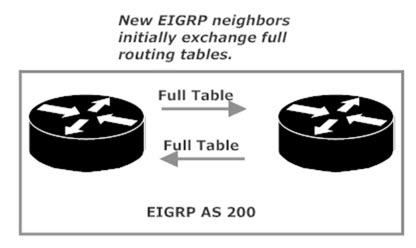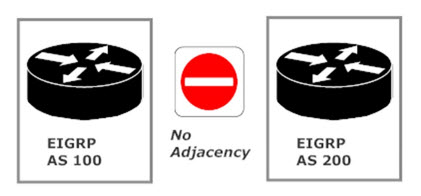EIGRP For The CCNA: Success Fundamentals
EIGRP is the enhanced version of the original and long-gone Interior Gateway Routing Protocol (IGRP). IGRP is no longer supported by Cisco and isn’t on the exams, but EIGRP is one of the most popular routing protocols in today’s real-world networks. With that in mind, we can expect quite a few EIGRP questions on exam day!
Over the years, EIGRP has been called a hybrid protocol, since it officially has characteristics of link-state (LS) and distance-vector (DV) protocols. EIGRP acts much more like an LS protocol than a DV protocol. The main DV behavior shown by EIGRP is the initial exchange of full routing tables between EIGRP neighbors.

After that initial exchange of full tables, an EIGRP router will send an update only when there’s a change in the network. That update will reflect only those changes and will not consist of a full routing update.
EIGRP brings these benefits to our network:
- Rapid convergence when a change in the network is Backup routes (“feasible successors”) are calculated before they’re actually needed due to the loss of a primary route (“successors”).
- Multiprotocol support, including IP, IPX, and Appletalk
- Support for VLSM and CIDR
- Considers bandwidth and delay when calculating routes, rather than the rather primitive “hop count” of RIP
- No longer Cisco-proprietary, meaning it can be run in the dreaded “multivendor environment” – a network with non-Cisco devices. (Horrors!)
Those benefits can’t benefit us until we have our adjacencies in place. Hello packets multicast to 224.0.0.10 to establish and maintain neighbor relationships. The Reliable Transport Protocol (RTP) is used to handle the transport of messages between EIGRP-enabled routers.
EIGRP uses autonomous systems (AS) to identify routers that belong to the same logical group. EIGRP speakers that are in separate ASes cannot become neighbors.

Other factors that must match for an EIGRP adjacency to form:
- If EIGRP authentication is present, it must be active on both potential Naturally, the passwords must match.
- The routers must be on the same subnet.
- A little something called “k-values” must match; since these are rarely changed, there’s usually not a problem here.
A big difference between OSPF and EIGRP is that EIGRP hello and dead timers need not match in order for an adjacency to form. A mismatch with EIGRP timers can cause other issues, as we’ll see later in one of our labs.
Once the adjacency is formed, it’s kept alive by a steady flow of Hello packets from the neighbor. If those Hellos stop coming, the adjacency is eventually dropped.
Let’s take a look at successors and feasible successors, two route types unique to EIGRP, as we head to the second part of this exclusive CCNA tutorial.




